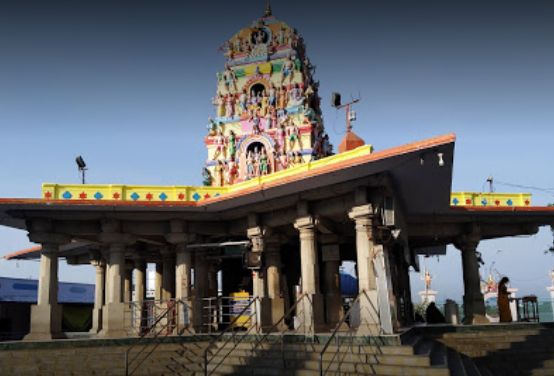 |
| Robert Browning, (born May 7, 1812, London--died Dec.12, 1889, Venice) |
“The
Grammarian’s funeral” is a dramatic monologue set in Europe shortly after
Renaissance. It was published in the poetry collection “Men and women” in
1855.It is a long poem of 148 lines that describes the movements of a funeral
procession of a grammarian carried by his disciples from the plain to the
mountain top.
His chief disciple throws light on the life of
the grammarian and his qualities. He is a man of high ideals. He was very handsome
and sweet-voiced like Apollo. But he shunned all worldly pleasures and devoted
his life to pursuit of knowledge. Like Shakespeare’s Prospero he preferred to
study and be the authority in his area of study, Grammar. So, he worked
tirelessly even at the cost of his health and life. “Long he lived nameless:
how should spring take note/ Winter would follow?” Due to his hard work and labour,
he was attacked by disease and old age. Still, he continued to study.
Browning’s
philosophy is expressed through the character of the grammarian. Though the
grammarian struggled throughout his whole life to attain his ideals, Browning
does not seem to say that his struggle will bring result in this very world. A
man may encounter many failures, but he will be rewarded in the afterlife. The
grammarian’s devotion to study comes from this belief. The low man thinks about
monetary benefit: the high man thinks about the higher pursuits of life. He
“throws himself on God.” To the grammarian time is endless. “What’s time? Leave
now for dogs and apes; man has forever.” Only the beast thinks about the
present moments of life; man should think of afterlife too. The quest for
knowledge led him to work hard that left him cramped and diminished. He devoted
long time in study which ultimately resulted in further deterioration in his
health. He became bald and his vision weak. Even his accents began to falter.
He was
suffering from diseases like Calculus and Tussis (Bronchial disease. His eyesight became weaker. He was paralyzed
from waist down. Yet such diseases did not discourage him. Some people
criticized him while others criticized his works. Though he was struggling with
death, he still uttered parts of speech and explained the concept of enclitic.
The old
scholar having full faith in God deeply involved himself in his work. His
energy is like that of a dragon which symbolizes his intense spirit. Like “a
soul-hydroptic”, the scholar desired to suck each and every drop of knowledge. The
grammarian struggled hard to settle the problems relating to Greek particles
“Hoti” and “Oun” which mean “because” and “therefore”. As a grammarian his
achievements are remarkable and he persevered in pursuit of knowledge till his
last breath.
For the sake
of learning he rejects the idea of enjoying life. His passion for learning is
compared to the act of eating a feast to the crumb. Like Tennyson’s Ulysses, he
wants “to follow knowledge like a sinking star/Beyond the utmost bound of human
thought.” Though “made weak by time and fate, but strong in will/To strive, to
seek, to find, and not to yield.” He
believes in knowing life before living. Life has a plan. It is like a building
that has to be planned before construction. “Image the whole, then execute the
parts/ Fancy the fabric/Quite ere you build, ere steel strike fire from
quartz/Ere mortar dab brick.”
To live life, it is necessary to have the
knowledge of life. For him there is no
end to learning. The grammarian’s strong faith in God made him more firm in his
pursuit. The limitation of time was not for those who were seeking ideals. For
ordinary people enjoyment and pleasure become the main goals of their life. “That
low man seeks a little thing to do, sees it and does it/ This high man with a
great thing to pursue, dies ere he knows it.”
Earnest
deeds done in this life will never go waste. God definitely showers His
blessings on those who make efforts. Time slips for those who lack faith in God.
The grammarian did not favour immediate gains because it was not a gain at all.
He was not satisfied with worldly gains. He believed that his honest work will
be rewarded in heaven. The old grammarian was aware of the fact that he has
grown old and death is inevitable. He concentrated on his work and engaged himself
exploring the mysteries of life.
After
grammarian’s death, his disciples carry his corpse to the high mountains to
bury. The grammarian was a man of genius. He abandoned the common path. He
devoted his life in search of knowledge. The funeral procession reaches the mountain
top where he was to be buried. The place was most suitable one as it was
visited by birds like swallows and curlews that were high-flying birds. He was
an enlightened person. Hence this place was a proper one where nature’s aspects
like stars, meteors, lightning and storms are seen. This place suits his noble
and grand personality. The silence, beauty and purity made this place best for
a man who lived with high ideals. The dead body of such a man should not be
buried in the common plain but rather on the mountain top which is the symbol
of high and noble ideals. The dead grammarian’s ideals and principles are put into
perspective throughout the poem. His high ideals made him immortal. The bottom
line is that we should also set an ideal in our lives. It is then that life
would be meaningful and worth living.
The disciple explains that the mountain top is
the proper place for the burial of such a man. He draws a parallel between
geographical landscape and man’s intellectual depth. Common people lead a plain
life like animals. They eat, drink, breed and at last die. The mountain peak
symbolizes light and learning. The common fields and villages are symbols of
darkness and ignorance. “Leave we the unlettered plain herd and crop." "Seek we sepulchure/ on a tall mountain, citied to the top/Crowded with culture."
The speaker chooses the
topmost peak of the mountain which is lit by the light coming from a citadel.
In this dramatic dialogue the speaker portrays his master as a man of faith and
high, lofty ideals. His speech reveals his devotion and dedication towards his
master. The messages of the immortality of the soul, faith in God, ideals of
hard work and facing hardships in achieving such goals have been depicted in
this long poem. Respect and honour are the most evident themes seen in this
poem.
This rhyme
scheme of this monologue a, b, a, b, c, d, c, d, e, f, e, f adds to the marching rhythm. Capital
letters were used to stress the themes in the poem: Life, Knowledge etc., Parentheses
(brackets) were used to indicate speaker’s instructions to other disciples. The
shift in meter (long tetrameter followed by shorter dimeter) indicated the
climbing movement. Browning was influenced by Shelley’s lengthy dramatic poems
like “Prometheus Unbound”.
Browning’s
dramatic monologues are well-known for their character study, historical
settings, social commentary, psycho-analysis and striking revelation of
passions, aspirations, and ethical philosophy with a tinge of irony. The medium
of dramatic monologue allowed Browning to maintain a great distance between
himself and his creations. Through the voice of characters, Browning could
expose evil without actually involving himself. Like John Donne, he makes a subtle
analysis of various moods and emotions. He is objective in his approach to
analysis of his characters unlike Tennyson who was subjective in delineation of
characters in his poems like “Ulysses” and “Lotos-eaters.”
His monologues are regarded as “soul-studies”.
Browning admits,” the soul is the stage; moods and thoughts are characters.” He
emphasizes;” My stress lay on the incidents in the development of a soul;
little else is worth study.” His heroes are eloquent, aggressive rhetoricians
attempting to alter radically the listener’s perception. But Browning could not
present his characters in action. That is why he could not succeed in his
plays. His characters think and feel but never act. His poetry shows him as a
dramatic thinker rather than as a dramatic creator. He could not deal with
contemporary themes whereas Tennyson tried to show the typical Victorian
thoughts and trends in his poetry.
Browning was
a thinker whereas Tennyson was more of an artist. Browning’s genius is essentially dramatic
whereas Tennyson’s is mainly lyrical. Browning is the poet of characters and
situations. His interest is in man and life is unbounded. Browning can catch a
character in a particular situation, dissect and analyse his feelings and
thoughts with great psychological insight.
Tennyson’s poems are flawless with
vivid and picturesque imagery; his expressions are apt and lucid. Tennyson was
influenced by Romantic poets like Keats, Wordsworth and Spenser and wedded
poetry to music with his lyrical skills and supreme craftmanship. His poetry
influenced Pre-Raphaelite poets of later period. Tennyson philosophical poems
like “In Memoriam”, “Idylls of the king”: are rated as obtrusive moral
preaching. His philosophy is shallow and superficial. His moral preaching is
meant for advocating the Victorian orthodoxy and Victorian compromise between
science and religious faith. He is the poet of moods and melody. He catches
fleeting moods and convey them artistically in neat melodious lyrics. His
lyrics are characterized by perfect combination of music, imagery and
expressions.
In contrast, Browning is often a slipshod
artist. His poetry is masculine and rugged as he is more concerned with
thoughts than with expression. Too much compression of style makes his style
obscure. Browning ‘never thinks but at full speed.” The rapidity of thought,
use of parentheses, inversions, foreign phrases, choice of unfamiliar topics
like Medieval and Renaissance themes, and quick shift in thoughts makes his
poems obscure. His approach is rather oblique than smooth and straightforward.
An intelligent reader who is acquainted with technical devices of Browning’s dramatic
monologues finds his poems intellectually stimulating and highly pleasurable.
At the same time Browning is capable of writing short lyrics filled with grace,
melodic variety and sweetness.
Browning’s
philosophy expounds the optimistic view of life. He has unquestioning faith “in
the existence of the supreme authority namely God controlling the manifold
energies of the world.” To him there is no ascetic way of turning away from the
world. He sings the wild joys of living love, the supreme principle of life and
failures in life are but the earnest success in the life beyond. According to
him, “life is but the threshold of an infinite life and our true life is
beyond.”
He examined the social issues of his day such
as domestic abuse and religious hypocrisy. As a liberal, he spoke against
slavery and supported equality for women. He also wrote for animal rights. He
mastered Latin, Greek, French and Italian at a very young age. The long poems
of later modern poets like T.S. Eliot, Ezra Pound, William Carlos Williams show
Browning’s influence.
*************************
2nd October, 2022 Somaseshu Gutala





































